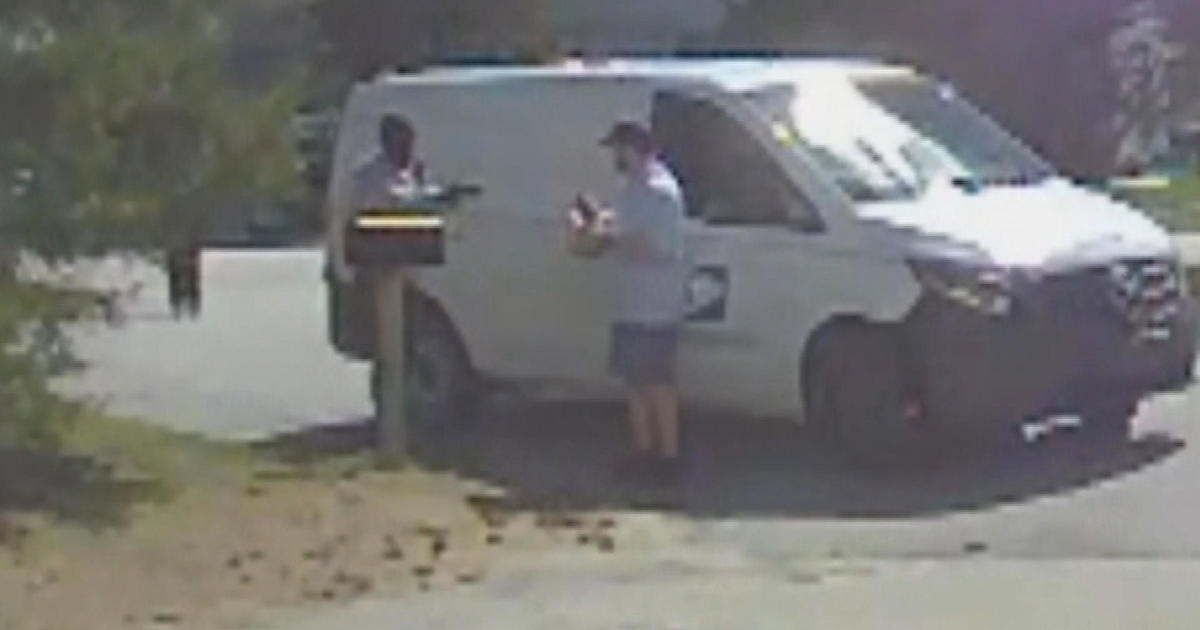Worries Raised About School Evacuations In Event Of NH Nuke Emergency
SEABROOK, N.H. (AP) - The nuclear disaster in Japan has revived decades-old concerns about who would help evacuate schoolchildren if something similar happened in New Hampshire.
At issue is who is responsible for getting children to evacuation shelters in an emergency. When the Seabrook nuclear plant was being built, the state initially proposed assigning that role to teachers, but teachers sued -- arguing that they shouldn't be forced to abandon their own families -- and a state court ruled in 1987 that they cannot be required to take on a role in the emergency plan. The plan that was ultimately approved puts "school officials" in charge without specifying teachers' roles.
"Nobody knows who those people are," said Seabrook Middle School teacher Dianne Dunfey. "At the same time, parents are directed not to pick up their children at school if there is an evacuation order, and we find that discrepancy to be alarming."
Dunfey has been a leading opponent of the Seabrook nuclear power plant for decades, organizing protests, scaling the fence surrounding the plant and getting arrested numerous times. She also has repeatedly objected to the role she and her colleagues are expected to play during an evacuation, so it was no surprise that when an earthquake and tsunami crippled a nuclear plant in Japan in March, she again took up the cause.
"We work with children every day in this building. We love these kids," she said in a recent interview in her classroom. "I can't even find the word to express my disbelief that people in positions of responsibility have not yet stepped up on the issue of the safety of children in a radiological emergency."
The March 11 quake and tsunami in Japan left more than 25,000 people dead or missing on the northeast coast and triggered the worst nuclear crisis since Chernobyl in 1986. The Fukushima Dai-ichi plant lost its power and cooling systems, and radiation leaks forced 80,000 people living within a 12-mile radius of the plant to leave their homes.
Less than two weeks later, Dunfey and 47 other teachers sent a letter to Gov. John Lynch arguing that the events in Japan highlighted the need to address their long lingering concerns.
Lynch responded quickly, dispatching the head of the state's emergency management office and other officials to meet with the teachers. That was more than previous administrations have done, but Dunfey is far from confident anything will change.
"There is a lengthy history with this situation and I would reserve any level of optimism that we're actually going to see concrete steps toward something feasible," she said.
In its 1989 ruling approving the emergency plan for the 17 communities within 10 miles of Seabrook, the Atomic Safety and Licensing Board discounted the testimony of teachers, a police chief and other public workers who said many of their colleagues would head home to their own families in an emergency. The panel said it found such testimony "perplexing" and said it "does not represent traditional American values and history."
"That testimony was basically brushed aside," Dunfey said.
Chris Pope, director of state Homeland Security and Emergency Management, said last month's meeting with teachers raised some issues worthy of further review, but he cast it as part of an ongoing process to make sure the state is prepared. The state recently oversaw a large-scale drill in western New Hampshire, near the Vermont Yankee nuclear plant, and already had scheduled a "table-top" drill involving about 100 participants near Seabrook for later this month.
"We've had five exercises since January, and during each one, we find things we'd like to improve," he said, while emphasizing that overall, he has complete confidence in the existing plan.
"I think we're very prepared," he said. "There's no type of emergency we spend more time training and preparing for than radiological emergencies."
Barbara Hopkins, assistant superintendent for the district that includes Seabrook, said school officials were working to analyze the district's emergency plan well before the Japan disasters, and that she expects it to be tweaked. For example, officials will be looking at the procedure for releasing children to parents and whether the Red Cross could take over that process at some point, meaning teachers would not be indefinitely responsible for the children.
While the district's evacuation plan doesn't specifically designate teachers, "the implication is there," she said.
"Do I worry about the kids not being taken care of? I don't worry about it," she said. "I've been in that school and seen the teachers. They'd give their right arms for those kids."
Construction of the Seabrook plant began in 1976 and finished 1986, but it did not receive its Nuclear Regulatory Commission license until 1990. Over the years, thousands of protesters were arrested during demonstrations that made Seabrook a symbol of the nation's anti-nuclear movement.
The 10-mile radius around the Seabrook plant also includes six Massachusetts communities. Peter Judge, spokesman for the Massachusetts Emergency Management Agency, said evacuation policies there specify that at least one teacher would be assigned to each bus to escort students to shelters, where they would remain until 8 p.m.
"There's never been one ounce of pushback from anyone," he said.
There haven't been any complaints from teachers in the New Hampshire communities that fall within Vermont Yankee's evacuation zone either, said David Crisafulli, assistant superintendent of the school administrative unit that includes Richmond, Swanzey and Winchester, but the policy isn't entirely clear on their role.
"We've had a pretty dedicated staff wanting to do right by kids, but on the other hand, there's a personal side to that -- Is your family OK? So I think there's going to have to be a balance there," he said.
The recent drill raised several other issues, he said, including the need for better communication with the state command center. And officials need to update plans to reflect new realities -- such as the fact that kids can instantly call or text their parents in an emergency, which could make it difficult to stop parents from arriving at the school to get their children.
"There are a couple of things that come into play that create more confusing than there used to be," he said.
(Copyright 2011 by The Associated Press. All Rights Reserved.)



